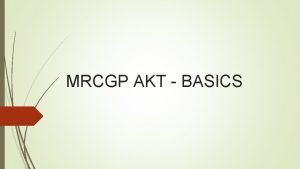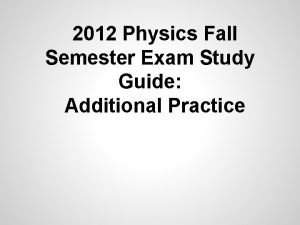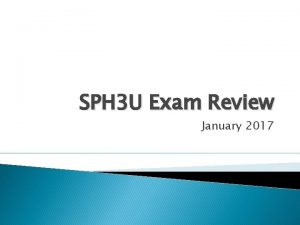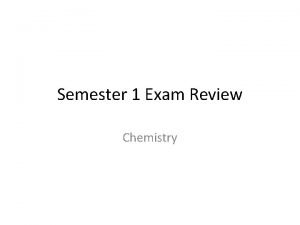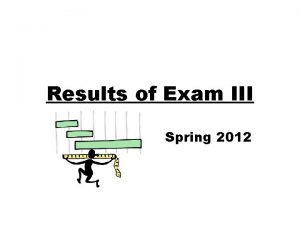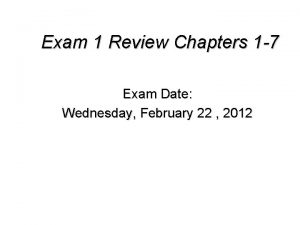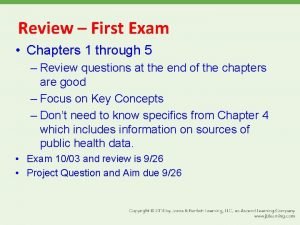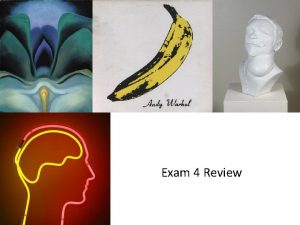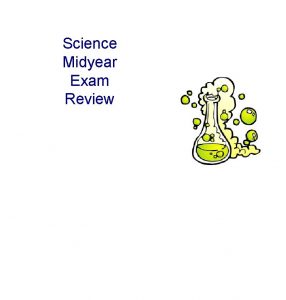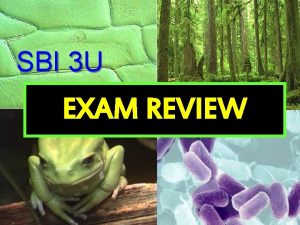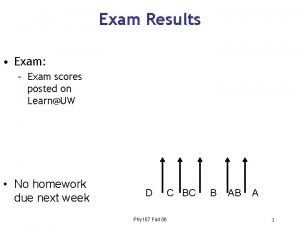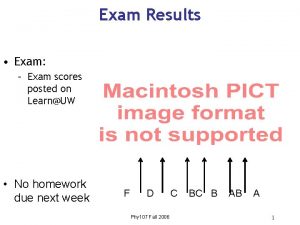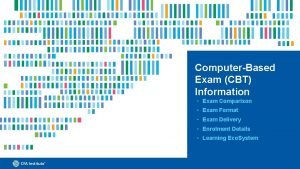Exam III Review 11192009 Exam 3 Review Chapters






























- Slides: 30

Exam III Review 11/19/2009

Exam 3 Review Chapters: 12 Enzyme Kinetic Mechanisms 8 Carbohydrates 14 Metabolism 15 Glucose Metabolism 16 Glycogen Metabolism and Gluconeogenesis 17 Primarily pyruvate dehydrogenase.

The Citric acid cycle It is called the Krebs cycle or the tricarboxylic and is the “hub” of the metabolic system. It accounts for the majority of carbohydrate, fatty acid and amino acid oxidation. It also accounts for a majority of the generation of these compounds and others as well. Amphibolic - acts both catabolically and anabolically 3 NAD+ + FAD + GDP + Pi + acetyl-Co. A 3 NADH + FADH 2 + GTP + Co. A + 2 CO 2

The citric acid cycle enzymes are found in the matrix of the mitochondria Substrates have to flow across the outer and inner parts of the mitochondria



Nathan Kaplan and Fritz Lipmann discovered Coenzyme A and Ochoa and Lynen showed that acetyl. Co. A was intermediate from pyruvate to citrate.

The five reactions of the pyruvate dehydrogenase multi enzyme complex

Co. A acts as a carrier of acetyl groups Acetyl-Co. A is a “high energy” compound: The DG ' for the hydrolysis of its thioester is -31. 5 k. J • mol-1 making it greater than the hydrolysis of ATP Pyruvate dehydrogenase converts pyruvate to acetyl-Co. A and CO 2

Pyruvate dehydrogenase A multienzyme complexes are groups of non covalently associated enzymes that catalyze two or more sequential steps in a metabolic pathway. Molecular weight of 4, 600, 000 Da E. coli yeast Pyruvate dehydrogenase -- E 1 24 60 dihydrolipoyl transacetylase --E 2 24 60 dihydrolipoyl dehydrogenase--E 3 12 12

Overview of Glucose Metabolism

Gluconeogenesis is the process whereby precursors such as lactate, pyruvate, glycerol, and amino acids are converted to glucose. Fasting requires all the glucose to be synthesized from these non-carbohydrate precursors. Most precursors must enter the Krebs cycle at some point to be converted to oxaloacetate. Oxaloacetate is the starting material for gluconeogenesis


Free energy changes in glycolysis Reaction enzyme DG ´ DG 1 Hexokinase -20. 9 -27. 2 2 PGI +2. 2 -1. 4 3 PFK -17. 2 -25. 9 4 Aldolase +22. 8 -5. 9 5 TIM +7. 9 +4. 4 6+7 GAPDH+PGK -16. 7 -1. 1 8 PGM +4. 7 -0. 6 9 Enolase -3. 2 -2. 4 10 PK -23. 3 -13. 9

Gluconeogenesis is not just the reverse of glycolysis Several steps are different so that control of one pathway does not inactivate the other. However many steps are the same. Three steps are different from glycolysis. 1 Pyruvate to PEP 2 Fructose 1, 6 - bisphosphate to Fructose-6 phosphate 3 Glucose-6 -Phosphate to Glucose

Gluconeogenesis versus Glycolysis

Gluconeogenesis versus Glycolysis

Pyruvate is converted to oxaloacetate before being changed to Phosphoenolpyruvate 1. Pyruvate carboxylase catalyses the ATP-driven formation of oxaloacetate from pyruvate and CO 2 2. PEP carboxykinase (PEPCK) concerts oxaloacetate to PEP that uses GTP as a phosphorylating agent.

Pyruvate carboxylase requires biotin as a cofactor

Acetyl-Co. A regulates pyruvate carboxylase Increases in oxaloacetate concentrations increase the activity of the Krebs cycle and acetyl-Co. A is a allosteric activator of the carboxylase. However when ATP and NADH concentrations are high and the Krebs cycle is inhibited, oxaloacetate goes to glucose.


Regulators of gluconeogenic enzyme activity Enzyme Allosteric Inhibitors PFK ATP, citrate FBPase AMP, F 2 -6 P PK Alanine Pyr. Carb. Allosteric Activators Enzyme Phosphorylation AMP, F 2 -6 P F 1 -6 P Inactivates Acetyl. Co. A PEPCK PFK-2 FBPase-2 Protein Synthesis Glucogon Citrate F 6 P AMP, F 6 P, Pi Glycerol-3 -P Inactivates Activates

Glycogen Storage • Glycogen is a D-glucose polymer • a(1 4) linkages • a(1 6) linked branches every 8 -14 residues

Glycogen Breakdown or Glycogenolysis • Three steps – Glycogen phosphorylase Glycogen + Pi <-> glycogen + G 1 P (n residues) (n-1 residues) – Glycogen debranching – Phosphofructomutase

Glycogen Syntheisis

Phosphoglucomutase

UDP-glucose Pyrophorylase

Glycogen Synthase

Glycolysis Review • Stage I: Energy investment (rxns. 1 -5), glucose phosphorylated and cleaved to yield 2 G 3 P and consumes 2 ATP • State II: Energy recovery (rxns. 6 -10), G 3 P converted to pyruvate with generation of 4 ATP • Net profit of 2 ATP per glucose Glucose + 2 NAD+ + 2 ADP +2 Pi 2 NADH + 2 pyruvate + 2 ATP + 2 H 2 O + 4 H+

Next Lecture Thursday 11/24/09 Exam III After Thanksgiving Lecture 28 Pentose Phosphate Pathway 12/01/09
 Hamlet act iii scene iii
Hamlet act iii scene iii Writ of certiorari ap gov example
Writ of certiorari ap gov example World history spring final exam review answers
World history spring final exam review answers Exam review template
Exam review template Spanish 2a final exam answers
Spanish 2a final exam answers Spanish final exam review packet answer key
Spanish final exam review packet answer key Human body systems final exam
Human body systems final exam Poe practice test kinematics answers
Poe practice test kinematics answers Rcgp akt content guide
Rcgp akt content guide Ied final exam
Ied final exam Hbs practice test
Hbs practice test World history first semester exam review
World history first semester exam review Entrepreneurship 1 final exam review
Entrepreneurship 1 final exam review Spanish 2 final exam review packet
Spanish 2 final exam review packet Environmental science final exam
Environmental science final exam Apes exam review
Apes exam review Ap world history final exam
Ap world history final exam Us history final exam semester 2
Us history final exam semester 2 English 11 semester exam
English 11 semester exam Review for exam pronouns
Review for exam pronouns Physics fall final exam review
Physics fall final exam review Zoology final exam review
Zoology final exam review Oer eduqas
Oer eduqas Physics fall semester exam review
Physics fall semester exam review Us history final exam
Us history final exam English 3 fall semester exam review
English 3 fall semester exam review Sph3u exam review
Sph3u exam review Verbal irony def
Verbal irony def Chemistry
Chemistry Physics 1 exam 2 review
Physics 1 exam 2 review Physics exam 2 review
Physics exam 2 review








